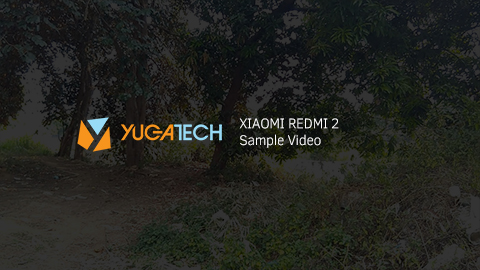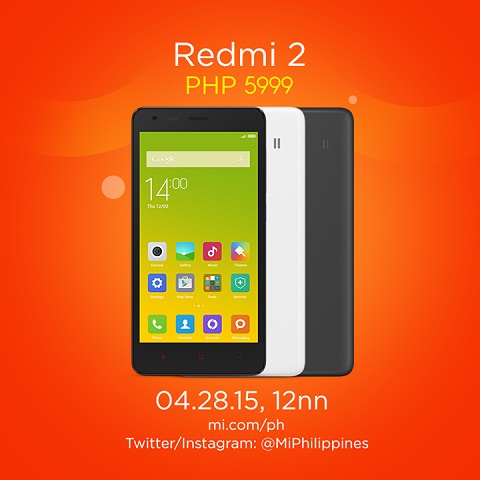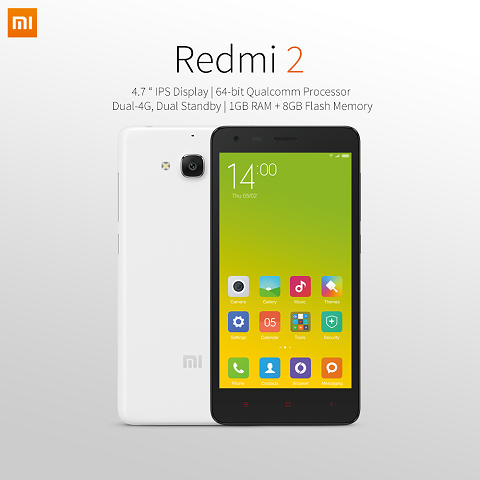The Xiaomi Redmi 2 boasts a 4.7-inch screen, an 8-megapixel camera, and Dual-LTE network connectivity for Php6k. For what is touted to be an affordable smartphone, is it worth the upgrade from its predecessor? The Redmi 2 landed at Lazada today, and here’s what you can expect from the device.

Xiaomi is one of the uprising forces that undeniably changed the landscape of the local tech industry with the release of its bang-for-the-buck devices last year, and the Chinese tech giant is set to bring its A game once again with the local release of the Redmi 2, one of its first foray into the era of 64-bit mobile computing.
Design and Construction
Despite the change in the numerical naming scheme, the Redmi 2 shares a lot of resemblance with the Redmi 1s. The rounded corners, the red navigation capacitive keys, and most of the button and hardware placements are very reminiscent with what we have seen with the prior device launched last year.
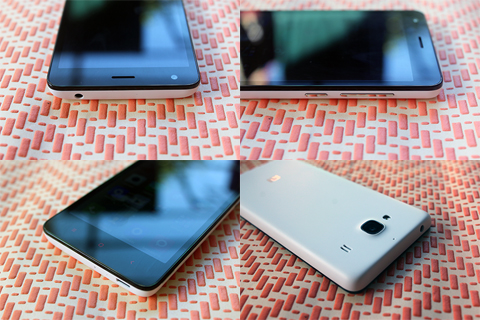
To give you an idea of where’s which, the front camera, call speaker (which is now placed a few centimeters from the edge) and screen display along with the capacitive soft keys are at the front, the microUSB port is at the bottom-right part, and the 3.5mm audio jack is at the top-right side.
The volume rockers and the power/lock key are all located at the right side. Flip the device over, and you’ll see the rear camera with LED flash and the speaker are at the back with the MI logo printed in metallic ink. Our review unit has a polycarbonate back plate in a white matte finish, and is a pleasant sight to behold.

The multi-color LED notification light illuminates below the screen, right where the capacitive soft keys are. Those keys, on the contrary, do not illuminate in one way or another except reflect when in contact with external light, and may be a really difficult thing to see especially when you’re situated in a dimly lit area.
Overall, Xiaomi brings good design and construction quality to the Redmi 2. The back plate does not creak and is not susceptible to smudges and fingerprints, it does not slip out and it is very comfortable to hold with one hand despite being lightweight, and is able to slide down on a pocket with ease.
Display and Multimedia
The display features a 4.7-inch screen from Sharp with a 1280×720 resolution. Bringing in a 312ppi, the viewing angles and contrast appear to be all good, the colors appear realistic and vivid, and the images do not lack crisp and detail. The screen is very legible to be viewed outdoors, despite the amount of glare it gets from direct sunlight.
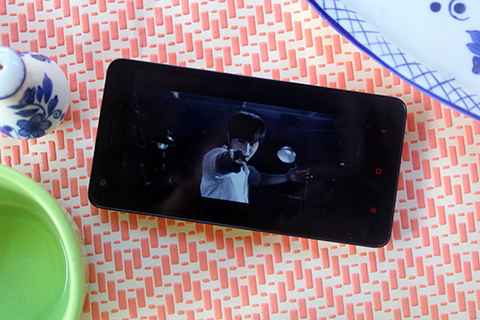
Viewing multimedia content on the Redmi 2 is great. The loudspeaker’s maximum volume is set on a level that it can be heard loudly in a bedroom, but lacks some oomph into it. Listening to the audio via wired accessories are great as well, and there are sufficient options to modify the sound setting according to the type of audio accessory you are using.
OS, UI, and Apps
Xiaomi’s MIUI is known to be straightforward and customizable. We liked how it’s easy t
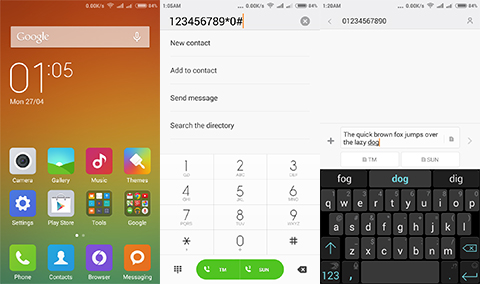
The overall design of the MIUI 6.4 on top of Android 4.4.4 KitKat is aesthetically pleasing. The choice of default colors, as warm as they may be, is not eye-straining, and the new shade of opacity in the notifications panel is a welcome update from the last time we saw it on MIUI 5. The lack of an app drawer may confuse first-time users who are converting from stock Android, but isn’t much of a problem when there is an option to group folders on the home screen.
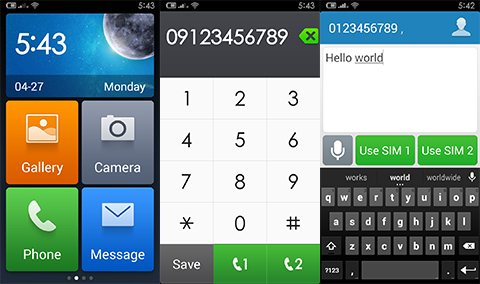
Aside from the standard home screen, Xiaomi offers a Lite Mode for a more streamlined, simplified experience aimed for first-time smartphone users, kids, and the elderly. This features really large icons and text from the home screen to basic apps such as phone calls and text messages.
Most of Google’s Apps and others such as Facebook, SwiftKey, and WPS Office come pre-installed with the device, leaving you a total of 5.75GB usable internal storage space to install more apps in the smartphone. There are also built-in options for changing themes which can be accessed through the settings menu.
Camera
The camera on the Redmi 2 is decent enough to take everyday photos. It’s not bad, but it ain’t one of the best we’ve seen either. I have a few gripes though: it tends to focus slowly on its subjects, and it tends to produce inaccurate colors a few times.

The front camera, on the other hand, is a joy to use and can be a quick ice breaker for friends since it detects faces and labels ages over them. Both feature a ton of settings and pre-set filters one can use to capture moments, and the rear camera offers a manual mode. Here are a few sample photos:
The rear camera records as high as 1080p video at 30 frames per second, and it’s pretty decent. There’s also an option to create timelapse videos. It does not have image stabilization, so expect your videos to be shaky if you have hands that are the same. Click on the image below for a sample clip:
Performance and Benchmarks
Performance on the Redmi 2 is smooth and fluid, save for a few occasional stutters and instances when you’re playing graphic-intensive games where lags are moderately persistent and may hamper your gameplay. Two modes are present for balanced and performanced-focused operations, and there’s also a function for clearing opened apps, acting as a ram booster. Our performance benchmarks indicate the following on the device, and how it fared against its predecessor:
| Xiaomi Redmi 1S | Xiaomi Redmi 2 | |
|---|---|---|
| 3DMark (Ice Storm Unlimited) | n/a | 4,376 |
| AnTuTu | 20,192 | 20,072 |
| Nenamark 2.0 | 42.6 fps | 53.5 fps |
| Quadrant Standard | 10,557 | 10,888 |
| Vellamo | 827 (Metal) 1009 (Multicore) 1315 (Browser) | 806 (Metal) 1251 (Multicore) 1892(Chrome) |
It’s worth noting that we did the tests on the Redmi 1S with MIUI 5 based on Android 4.3 Jellybean last year. The difference in OS and UI did only a little to improve the performance benchmarks, but these are still significant improvements on the overall scores especially in the Nenamark test.
Connectivity and Call Quality
Using any wireless connectivity is a breeze. It can’t be simultaneous, but the LTE functionality — which support local LTE networks like Globe — can be switched from one SIM card to another, which makes it easier for those who have two sim cards on mobile data plans.
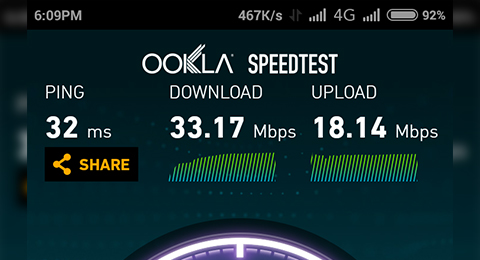
Author’s note: We’ve encountered mobile data problems with Smart’s LTE, which is a bit odd since its LTE network supports Bands 1, 3 and 5. Globe, on the other hand, supports LTE Bands 3 and 7. Xiaomi Redmi 2 supports LTE Bands 3, 7, and 8 which means both networks should have been working fine upon use, but we couldn’t find a way to make Smart’s LTE signal operational after hours of tweaking the settings. We’ll keep you posted for updates.
Call quality is generally okay, and does not have any problems either on speaking through the microphone or listening through the now-adjusted call speaker.
Battery Life
Xiaomi has exerted efforts to include a plethora of options to lengthen the battery lifespan through pre-set and customizable profiles. This is really useful if you are keen on setting sleep schedules and enable its built-in battery saving mode.

The Redmi 2 was able to last for almost a day with moderate use of 3G/4G mobile data, calls, and texts. We also checked the device and got 10 hours and 23 minutes from our standard battery test of looping a video clip at 50 percent brightness and volume on MXPlayer at airplane mode and with earphones on, which is surprising for a device with a battery capacity rating like this. We also tried using PCMark to run a battery life benchmark test, but it repeatedly gets errors after a few hours of running.
Conclusion
Xiaomi has made a well-constructed device in the form of the Redmi 2. The Php5,999 price tag may be a bit higher than the first time the Redmi line was introduced last year, but its great features make up for the price — the well-formed design and display, the inclusion of Dual-LTE connectivity, and the continuing efforts of the MIUI skin all made the experience stellar and something that’s worth the penny.

With that being said, it’s not 2014 anymore, and a lot of new, affordable smartphones are saturating the local market. The device may suffer heavily from huge competition coming from the bang-for-the-buck mid-range devices such as the Alcatel Flash Plus, bearing beefier specs at a few hundred pesos higher.
The Redmi 2 can also be seen as a minor upgrade from the 1S as it mostly resembles its predecessor — from the outer appearance deep down into the hardware — which might not make current Redmi users upgrade, but instead lure new users into the Mi Universe. Nevertheless, the Redmi 2 is still a great buy for those interested owning an Xiaomi device.
Xiaomi Redmi 2 specs:
4.7-inch 1280 x 720 Sharp / AUO IPS display, 312ppi
AGC Dragontrail Glass
1.2GHz 64-bit Qualcomm Snapdragon 410 quad-core CPU
1GB LPDDR3 RAM
8GB internal storage
up to 32GB via microSD
8MP BSI rear camera, Omnivision sensor, F2.2 aperture
2MP front camera
Dual-SIM, Dual-Standby, Dual-LTE
4G LTE, 3G HSPA+
WiFi 802.11 b/g/n
Bluetooth 4.0
USB OTG
GPS, A-GPS, GLONASS
Android 4.4.4 KitKat w/ MIUI 6
2,200mAh battery
134 x 67.2 x 9.4mm, 133g
White, Dark Grey
What we liked about it:
*Impressive design and build
*Great 720p display
*Aesthetically-pleasing MIUI
*Fast connectivity
*Great battery life
*Prominent Outdoor legibility
*Dual-LTE support
What we didn’t like:
*Camera focuses slowly and produces inaccurate colors
*Capacitive keys do not have backlight
The post Xiaomi Redmi 2 Review appeared first on YugaTech | Philippines, Tech News & Reviews.












